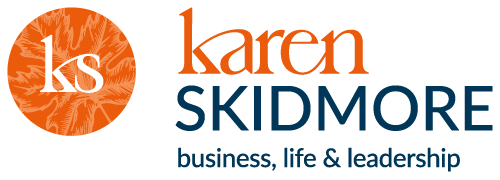It just couldn’t happen.
A week at Disney World, Florida and for me NOT to write an article based on my experiences of simply one of the best customer focused businesses … well, it just wasn’t going to happen, was it?!
6 days spent getting up at 7am so we could beat the breakfast queues and get on the first bus to the designated park of the day; there was so much to love about how Disney has made the whole customer experience an art.
But the one thing that struck me the most was how easy it was to spend money.
Not in the way that supermarkets lay out the sweets and chocolate bars at checkouts or even the way that burger restaurants ask the notorious “would you like fries with that?” question.
No. Disney has a way of making it easy to spend your money in a way that you love to spend.
I’m sure you know the phrase “You hate being sold to but you love to buy”.
The all-new Disney Magic Bands that were first introduced in 2013 are now integral to the whole Disney experience. From using them to get access to your hotel rooms and entrance into the parks through to putting your purchases, photo moments and meals onto your account, they have revolutionised the way Disney serves it’s customers.
Much has already been written about these Magic Bands. And I didn’t want to focus this article on what and how Disney specifically uses these throughout their parks. After all, I’m guessing you don’t have the $1Billion budget to create such a system in your business, do you?!
But it has got me thinking about how businesses like mine and yours make it easy for our own clients to spend more money with us.
Because from what I’ve seen over the past 10 years, many of you make it VERY difficult for prospects to become clients, as well as VERY difficult for current clients to spend more money with you after the initial purchase.
So based on my 6 days of full-on Disney easy spending experience, here are my top 5 questions for you to ask yourself to see how you can make it easier for revenue to come into your business.
1) How easy is it for someone to give you money?
When we checked into our Disney hotel, all it took was a swipe of a credit card and we instantly got a $1,500 limit on our Magic Bands. From there, any purchase we made just needed a swipe of Mickey’s head and a secret pin number. No need to carry cash or cards or have to be there for either of our kids to make a purchase.
Recently I had an invoice that I needed to pay for some printing work. The reason it took me so long to pay was there were no bank account details or any mention on how I should make payment. Great banner stands – shame about the hassle it took me to pay their invoice!
Not all of you need to be in a position to take online payments but if you run events or sell digital products, setting up accounts with Paypal or Stripe doesn’t take long and can be the quickest way to be offering a secure and efficient way of clients to pay you.
Even better, spreading costs across the year in the form of monthly recurring payments make a reliable cash flow for you and an easy way of paying for your clients. I took up such an offer with my vets last year. Instead of having to go in every 4 or 5 months and shelling out £70 for advocate and millabex for my dog, I now pay a monthly fee that comes out via direct debit. And the added bonus is that they give Rocky an annual check up for free so I end up saving money.
2) How personal do you get with your prospects?
One swipe of the Disney Magic Band and up comes our name for the cashier or restaurant host to greet us personally. And yes, all Disney cast members have been trained to call each customer by their name.
When building your database, asking for email addresses is of course mandatory. And there are many businesses who decide to just stick to email addresses as less information can mean more sign ups. But getting an unpersonalised email doesn’t help warm up your relationship (especially when some CRM systems default to Hi Friend if no first name is collected – one of my pet peeves of Infusionsoft!)
And getting personal goes much further than just knowing someone’s first name. Surveys and questionnaires can all go to building a profile of your ideal prospects so you can tailor your marketing communications specific to them.
3) How many times do you actually ask for the sale?
I didn’t need to go to Disney to know that this is singularly THE biggest reason why most of you don’t make it easy for clients to spend money with you.
From being worried about sending out too many emails (and yes, an email once a month is simply NOT enough to engage and build any form of relationship!) to hate have any form of discussion about money, not actually asking for a sale is a common crime.
Is not talking about money a British thing? Or do fewer women like it than men?
The fact of the matter is that whether you are male or female, British or not, you probably shy away from any form of closing, even when your prospect is giving you buying signals in big, flashing neon signs.
Asking for the sale doesn’t come naturally to most people. I get that. It certainly didn’t to me, even as someone who came from a corporate sales environment before starting my own business.
When it comes to selling yourself, there seems to a dozen or more voices that start to question your worth and ability to do the job when it comes to asking for the sale LOL
But asking for the sale enough times is all down to practice. Yes, there are plenty of techniques to try … but simply getting into the habit of just asking can make a massive difference.
“So when do you want to get started?”
“What’s the best day for you to have your first session with me?”
“Do you want to go for the £199 or £399 option?”
“What’s the best credit or debit card for you to use for the first payment today?”
These are all great questions to ask; simple, non-threatening and to the point. Practice asking these with every conversation you have with a potential client and you are going to get a lot more yeses!
4) Do you have an entry level price set?
Disney knew that the holiday we booked via our travel agent was only the first purchase of the week. We had 6 days of feeding, shopping and drinking to be done whilst we there.
And yes, the price of 7 nights at Animal Kingdom Lodge in a room overlooking the giraffe paddock is hardly an entry level price!
But if you are struggling to get enough clients to show an interest or say yes to what you offer, are you missing out on an entry level product or service?
Now, this is NOT an opportunity to sell yourself cheap. An entry level price is NOT an excuse to discount. If you are attracting prospects that tell you they love what you offer but they can’t afford you, they are either in the waste-your-time category or you’ve not done a good enough job of demonstrating the benefits of what you offer.
But sometimes, a prospect is just not ready to jump in at the full package. They need to try-and-test you or start small to enable them to see the potential of what’s on offer.
So if there is a way of stripping back on of your offers to basics or offering something on a trial or reduced service level, this could be an easy way of increasing your sales over time.
5) How often do you ask your current clients to spend more with you?
You may have a natural transcending list of offers already, but in my experience, most business owners I’ve worked with still assume that their clients know what else is on offer and wait for them to ask.
Its something I know I’ve been very guilty of; happy, satisfied clients but not really knowing what else I could help them with!
If you offer a service and work with clients over a period of time, then a real simple step to introduce is regular review conversations; opportunities to discuss where they’ve come from, the results they’ve had already and what’s next on the horizon. It may be that you’ve got the perfect solution to take them there!
If you offer products, then you only need to be an Amazon customer to realise the potential of up-sells, cross-sells and down-sells. And you don’t need a complicated CRM system to put these in place, either. A monthly or fortnightly review of product sales and setting time aside to write custom emails with specific offers to specific people can make a massive difference to your revenue potential … and all without having to bring in a single new customer.
So which question are you going to come up with answers for? Where in your business could you be asking for more business or creating opportunities for prospects (and current clients!) to spend money with you?
These questions, of course, aren’t the only ones. If you have one or two you think others should be asking, please take the time to add them in the comments below. I would love to read your thoughts and opinions on how we all could create more ways for clients to spend more money with us.







